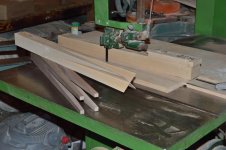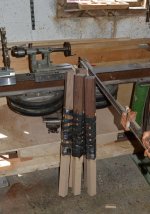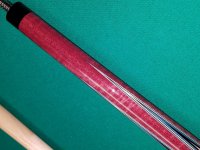First and foremost it can only be done IF all 4 channels in the forearm piece [the female part of the FS] are cut exactly the same length and depth. If one is off you may never get all 4 lined up without any additional manipulation on the point itself.
First and foremost, let me say most of your cues define elegance for me. It would be impossible to remove a detail, nor in most cases add one, and have the cue be any better either way. (Within its own concept).
But i've been puzzling about your statement above, and trying to figure out if it is even possible to put together a full splice without that condition holding, unless the fabricator is seriously bending the prongs on the mating points.
Others have contacted me by PM and it is fairly clear the notion of moving a full splice rough blank to center might not be fully appreciated. You can't do it by the OD, (except a rough 1st approximation). Make your best guess, take a cut and see if the points like up, and then move down to the butt end, and take another cut, and see if the space between the points at that end is the same the whole way 'round the butt.
If the space between points is not the exact same, then the blank is not centered on the joint. So move that end, informed by the forearm end as well. (First 2 cuts, 1 at each end) will tell if the axis of the joint is askew to to the current axis of rotation, or parallel to it but off center. Then make a good guess about how far to shift each end, and take another skim cut. Within about 3 iterations it should be running true. But you will never know if a blank is running true to its own center if you can't inspect and manipulate both ends.
I get the impression that people dial the forearm end in. That one is obvious. But then if the next pass, the points are stairstep, they blame the blank. In reality they don't know if it was the blank if both ends were not dialed in. Most likely in a situation like that, the center or the blank is skewed to the center of lathe rotation. You can tweak one end to "fix" it, but really it keeps getting worse with each succeeding cut and change at that end because the wrong end is being moved the wrong direction.. Both ends of the joint have to be moved dead on axial with the lathe rotational axis.
Personally, i find it easy to do with a couple 4 jaws, one at each end as described in earlier post. Then again, there's a lot of chucks on hand here.

Above are cue blanks, below are desk legs, same difference.
Attachments
Last edited:






